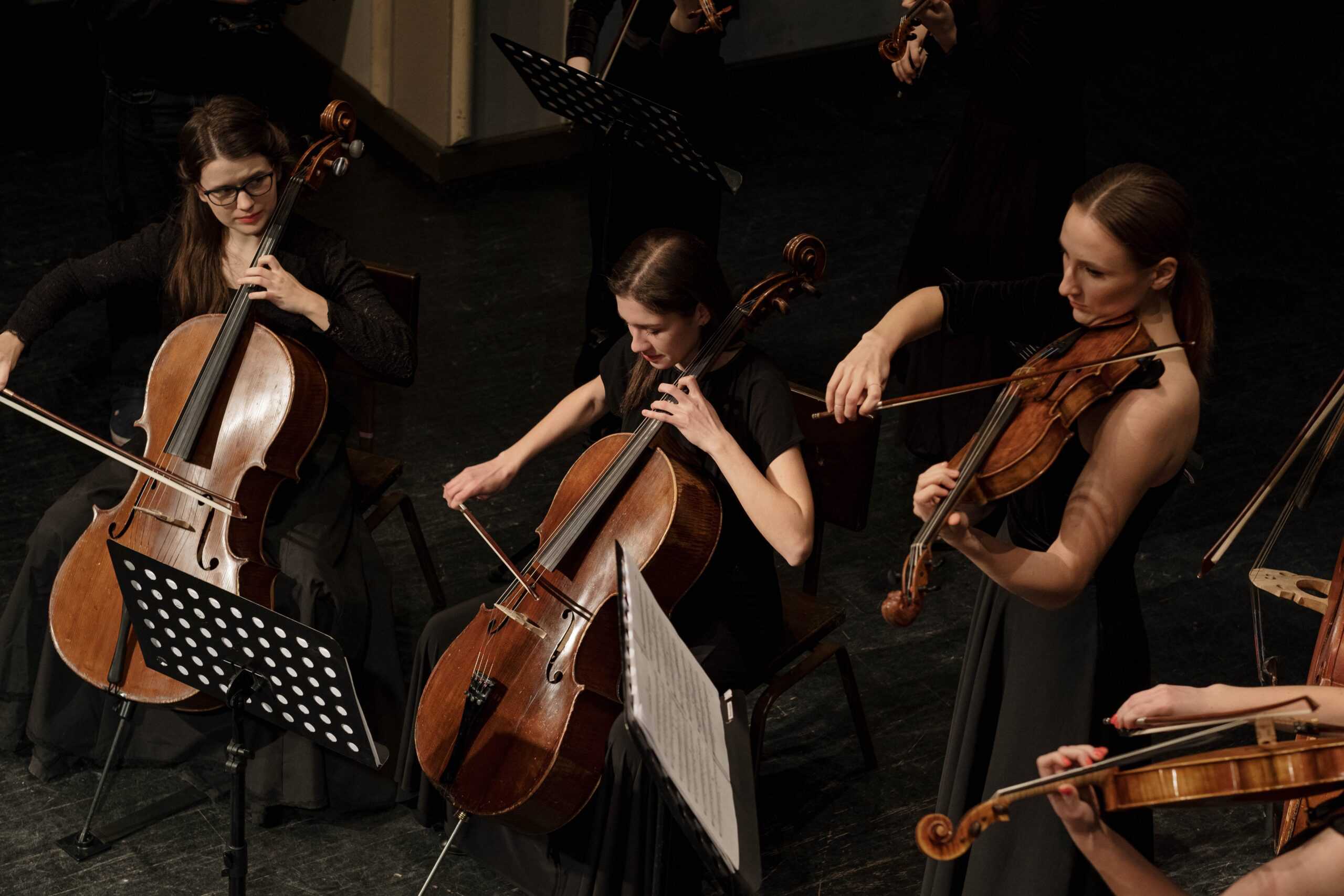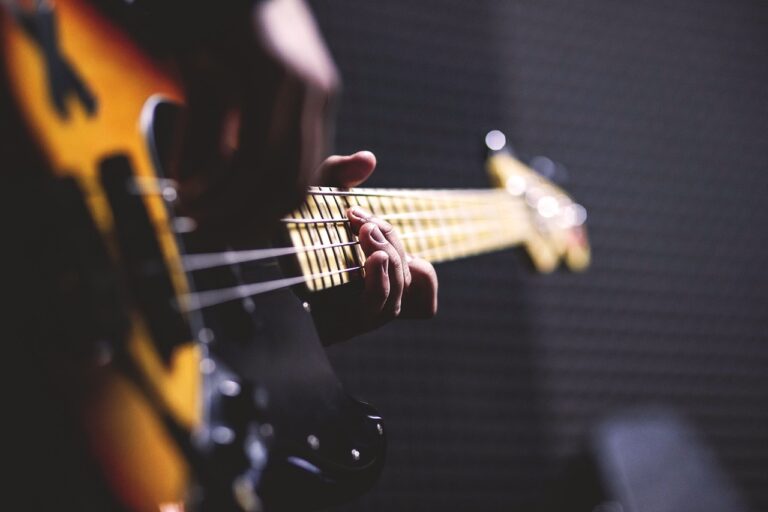Why Do Cellos Not Have Frets?
The cello, with its graceful contours and soulful resonance, stands as a beloved member of the stringed instrument family.
Its music possesses the unique ability to evoke deep emotions, spin intricate stories, and enthrall audiences with its poignant melodies.
However, one distinctive feature sets it apart from many of its musical kin: the absence of frets on its fingerboard.
Unlike instruments like the guitar, the cello boasts a smooth, uninterrupted fingerboard, allowing the strings to move freely beneath the player’s fingertips.
This conspicuous difference prompts a natural question: Why do cellos not have frets?
In short, Cellos do not have frets because frets limit the ability to produce microtonal variations and subtle shifts in pitch, which are essential for the expressive and dynamic range of the cello. The fretless fingerboard allows cellists to achieve a continuous range of notes, enabling more nuanced and emotive playing.
In our quest for answers, we’ll delve into the cello’s history, dissect its anatomy, and explore the specific traits that define this instrument.
By doing so, we’ll uncover the rationale behind its fretless design and the unique musical advantages it offers.
Over the course of this article, we will embark on a journey that reveals the rich tradition, confronts the challenges, and unveils the expressive potential of fretless cello playing.
Through this exploration, we aim to shed light on why the cello remains steadfastly unfretted in a world where fretted instruments are more common.
How Does the Cello Fingerboard Work?
Unlocking the secrets of the cello’s fingerboard is akin to peering into a world of musical sorcery. This seemingly unassuming part of the instrument holds the key to the cello’s ethereal voice, and its operation is nothing short of intriguing.
1. Pitch Control Through Finger Placement
Imagine this: with a mere touch of their fingers, cellists wield the power to command pitch. Pressing a string against the fingerboard at precisely the right spot effectively shortens the vibrating length of the string, conjuring higher notes. Release that pressure, and the string’s length increases, invoking lower tones. It’s a delicate dance between fingertips and strings, where the fingerboard serves as the enchanted stage.
2. The Benefit of Fretlessness
Now, here’s where it gets truly enchanting. Unlike fretted instruments that dictate fixed intervals and limited pitch variations, the cello’s fingerboard is a wild, untamed frontier. Its fretlessness means there are practically infinite pitch possibilities between two points. This liberated canvas empowers cellists to weave intricate sonic tales with microtonal nuances, fluid glissandi that mimic sliding down a musical waterfall, and emotionally charged vibrato—all with an unrivaled sense of freedom.
3. A Melodic Canvas for Artistry
For the cellist, the fingerboard isn’t just a functional surface; it’s a realm of boundless expression. Every nuanced movement of a fingertip becomes a brushstroke on the musical canvas. In the world of classical and romantic music, where emotion takes center stage, the fretless fingerboard becomes a conduit for conveying feelings in the most subtle and profound ways.
4. Challenges and Mastery
But, hold on, the enchantment doesn’t come without its trials. Achieving the elusive state of perfect intonation on the cello is akin to chasing fireflies on a moonless night. It demands rigorous training and the development of a hypersensitive ear. Cellists must cultivate muscle memory and acute pitch awareness to execute the precise adjustments necessary to keep each note in perfect tune.
5. The Role of the Bow
Oh, and let’s not forget the bow—a sorcerer’s wand in the hands of a cellist. While the fingerboard controls pitch, it’s the bow’s pressure, speed, and direction that summon the timbral magic, molding each note into a unique sonic gem.
In sum, the cello’s fingerboard is not a mere conduit for sound; it’s a stage where musical alchemy unfolds. The marriage of a fretless fingerboard and a skilled cellist’s touch crafts the cello’s unmistakable voice—a voice that sings, weeps, and resonates with the full spectrum of human emotion. It’s a musical enigma, a riddle waiting to be unraveled with every performance.
Why Are Cellos Fretless?
The absence of frets on cellos, a defining feature of this stringed instrument, is not a mere happenstance but a deliberate choice that has profound implications for the way music is created and expressed. To understand why cellos are fretless, we must delve into the historical, technical, and musical aspects that underpin this intriguing design.
1. Historical Evolution
The story of the fretless cello traces back centuries, to a time when the instrument was evolving and finding its voice. Early iterations of the cello did incorporate frets, much like other stringed instruments of the era. However, as the cello grew in popularity and gained recognition as a solo and ensemble instrument, a significant transformation occurred. Musicians and luthiers began to experiment with different designs, and the fretless cello emerged as the preferred choice.
2. The Quest for Expressiveness
One of the foremost reasons cellos are fretless lies in the pursuit of expressiveness. Frets on stringed instruments serve as fixed markers that dictate precise pitches. While this simplifies the task of playing in tune, it restricts the nuances of expression. Fretless fingerboards, on the other hand, provide an open canvas for artistic expression. Cellists can glide their fingers along the fingerboard, precisely shaping each note’s pitch and adding subtle variations in intonation. This unrestricted control allows cellists to infuse their music with the depth of emotion that defines the cello’s soulful character.
3. Versatility and Musical Styles
The fretless design of cellos lends itself beautifully to a wide range of musical styles. While it is celebrated for its role in classical music, the cello’s versatility extends to jazz, world music, and contemporary genres, where fretless playing allows for fluid transitions between notes and an innate ability to capture the nuances of each musical idiom.
4. Artistry and Innovation
The world of cello playing is a realm of constant innovation and artistic exploration. While the core design of the cello has remained largely fretless, contemporary cellists and luthiers continue to push boundaries. Some experimental cellists may incorporate electric cellos with frets for specific musical purposes, but the traditional unfretted cello remains a timeless symbol of artistry and musical depth.
In conclusion, the choice to keep cellos fretless is a testament to the rich history, expressive potential, and adaptability of this remarkable instrument. It speaks to the timeless allure of the cello, an instrument that continues to captivate audiences and inspire musicians to explore new horizons of musical expression, all while remaining true to its fretless heritage.
Challenges and Advantages of Fretless Playing
Fretless cello playing is a captivating art form that comes with its unique set of challenges and advantages. It’s a world where the pursuit of perfect intonation meets the freedom of expression through unfretted notes.
Mastering Intonation: The Cello Player’s Challenge
One of the most significant challenges that confront cellists is mastering intonation on a fretless instrument. Unlike fretted instruments where the frets provide a precise guide to pitch, the cello’s fingerboard offers no such assistance.
Cellists must rely on their finely tuned ears and muscle memory to hit the right notes with impeccable accuracy. Achieving perfect intonation demands years of practice and a keen awareness of the subtle pitch variations that result from finger placement and pressure.
This challenge, however, is what distinguishes exceptional cellists. It’s a journey of continuous refinement, where players develop an acute sense of pitch, allowing them to navigate the cello’s expansive tonal palette with precision and finesse.
The Versatility of Unfretted Notes
While the absence of frets presents challenges, it also bestows a myriad of advantages upon cellists. Fretless playing offers unparalleled versatility and artistic freedom.
- Expressive Nuance: Fretless fingerboards allow cellists to explore the realm of expressive nuance to its fullest extent. They can employ vibrato, glissandi (smooth slides between notes), and microtonal adjustments with exceptional finesse. These techniques infuse music with emotions and subtle textures that are often unattainable on fretted instruments.
- Fluid Transitions: The smooth, uninterrupted fingerboard allows for seamless transitions between notes. Cellists can effortlessly glide from one pitch to another, creating flowing and lyrical melodies. This fluidity enhances the beauty of legato passages and lends itself to the expressive storytelling that is a hallmark of cello music.
- Adaptability to Various Styles: The versatility of the fretless cello extends across musical genres. Whether in classical, jazz, folk, or experimental music, the cello’s fretless design enables it to adapt to diverse styles, making it a versatile and sought-after instrument in the world of music.
In essence, the challenges of fretless cello playing, particularly in mastering intonation, are what sharpen the skills of cellists and elevate their artistry. The unfretted fingerboard, with its limitless expressive potential, is their canvas for musical innovation and storytelling. It’s a world where precision meets passion, where intonation is finely tuned, and where the cello’s enchanting voice is set free to weave stories and evoke emotions that resonate deeply with audiences around the world.
Comparing Fretted and Fretless Stringed Instruments
Stringed instruments come in two primary categories: fretted and fretless. Each category offers distinct advantages and characteristics that shape the sound and playing experience. Let’s explore the differences and delve into how they impact music.
From Cellos to Guitars: How Frets Change Sound
The presence or absence of frets significantly influences the sound and playing technique of stringed instruments. Let’s compare two classic examples: the fretless cello and the fretted guitar.
- Fretted Instruments: Guitars, mandolins, and banjos are among the many fretted instruments. Frets act as fixed markers on the fingerboard, dictating specific intervals and precise pitches. This makes fretted instruments highly accessible for beginners, as the frets ensure that pressing a string at a particular position produces a consistent note. However, this design limits the flexibility and subtlety of pitch control. Fretted instruments excel in genres that benefit from precise intonation and chord-based playing, such as rock, blues, and bluegrass.
- Fretless Instruments: In contrast, fretless instruments like the cello offer an open canvas for pitch control. Without the constraints of frets, players can produce a continuous range of pitch variations, from microtonal shifts to expressive slides and vibrato. This freedom fosters a deep connection between the musician and the instrument, allowing for a high degree of emotional expression. Fretless instruments shine in genres where expressive nuances, lyrical melodies, and emotional depth are paramount, such as classical, jazz, world music, and certain forms of folk music.
Musical Styles and Fretless Instruments
The choice between fretted and fretless instruments often aligns with the stylistic demands of the music being played.
- Fretted Instruments: Fretted instruments are well-suited for music that requires precise and consistent pitch, particularly in chord-based genres like rock, pop, and country. The frets provide a reliable framework for playing chords, arpeggios, and melodies with minimal reliance on a highly trained ear for intonation.
- Fretless Instruments: Fretless instruments are celebrated for their expressive capabilities and are favored in genres where musical storytelling, improvisation, and emotional depth are paramount. In classical music, the cello’s fretless fingerboard allows for nuanced interpretations of complex compositions. In jazz, it facilitates improvisational freedom, enabling musicians to explore intricate harmonic structures and create highly personalized performances.
In essence, the choice between fretted and fretless stringed instruments is a matter of artistic preference and the demands of the music being played. While fretted instruments offer accessibility and precision, fretless instruments unlock a world of expressive possibilities, making them prized companions for musicians seeking to convey the deepest emotions and stories through their music.
Final Thoughts
In the captivating realm of music, the cello’s fretless fingerboard emerges as an enigmatic testament to the ceaseless quest for artistic expression. Its absence of frets, a seeming paradox, serves as both a formidable challenge and an inexhaustible wellspring of creative freedom. In the hands of a skilled cellist, this unfretted canvas transforms into a portal to untold emotional depths and sonic mysteries. The cello’s haunting melodies, sculpted by the virtuoso’s fingertips upon this beguiling expanse, traverse a labyrinth of stories, conjure vivid emotions, and ensnare listeners in a web of awe and wonder that transcends linguistic boundaries. It stands as a living embodiment of the profound symbiosis between musician and instrument, where intonation becomes a finely honed art, and where music finds its purest, most beguiling voice amidst the fretless cello’s intriguing paradoxes.








